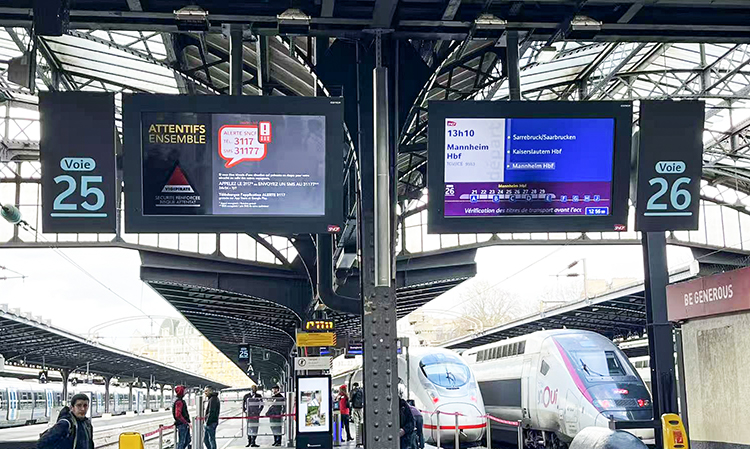Why Power Efficiency Drives Procurement Decisions
High brightness LCDs (1,000–5,000 nits) are essential for sunlight visibility, but energy demands can impact ROI. Here’s why savvy buyers prioritize power metrics:
What is the power consumption of a high brightness LCD display during operation?
Cost Control: A 50W display running 24/7 adds **300+ annually**‌ per unit in energy costs (at 0.15/kWh). Bulk orders magnify savings.
Durability: Lower power consumption reduces heat stress, critical for displays in high-temperature industrial environments.
Sustainability Goals: Energy-efficient models align with global regulations like the EU Ecodesign Directive and corporate net-zero targets.
Breaking Down Power Consumption: Real-World Data
Risingstar high brightness LCD display station application case
Breaking Down Power Consumption: Real-World Data
Power usage varies by size, brightness, and technology. Here’s a comparison for bulk buyers:
high brightness LCD display Hidden Factors That Spike Energy Costs
Static Brightness Settings
Displays fixed at 100% brightness waste 30–40% energy in shaded or indoor environments.
Outdated Backlight Tech
CCFL-backlit LCDs use 2x more power than modern edge-lit LED models.
Poor Thermal Design
Displays without heat-dissipation layers overwork cooling systems, increasing power draw.
Smart Strategies for Energy-Optimized Procurement
Demand Adaptive Dimming
Look for displays with ambient light sensors or time-based brightness scheduling. These cut power use by up to 50% in variable conditions.
Before finalizing orders, ask:
“Can you provide a lifetime energy cost projection for 100+ units?”
“Do displays support low-power sleep modes during inactivity?”
“What’s the efficiency loss rate after 10,000 hours of use?”
“Are components compatible with renewable energy systems (e.g., solar-powered signage)?”
“How do you handle custom power optimization for specialized environments?”
Ready to Minimize Costs and Maximize Visibility?

